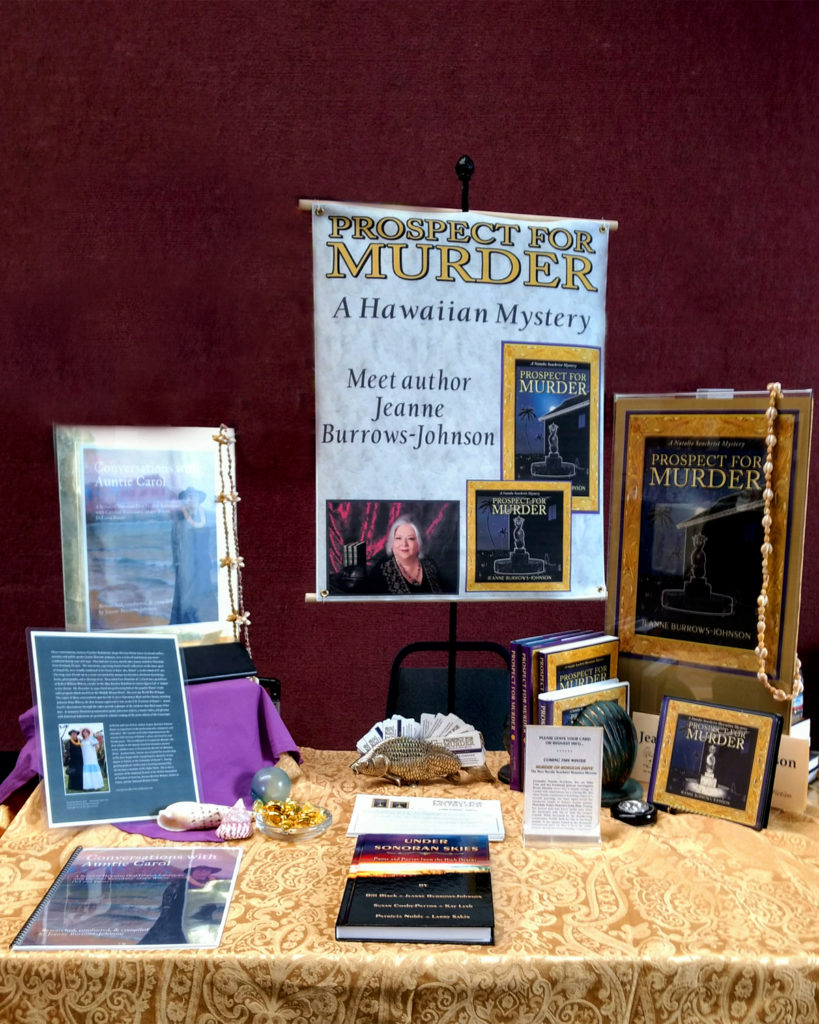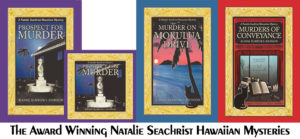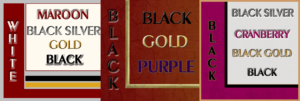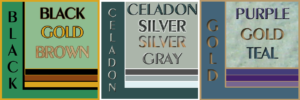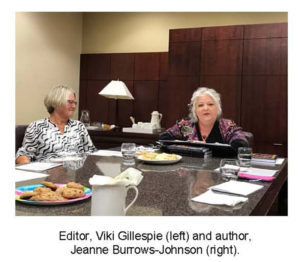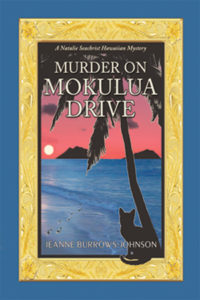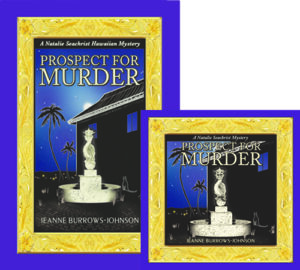
OPTIMIZE YOUR AUTHOR INTERVIEWS!
Written or audio, interviews are a wonderful opportunity authors to communicate with their readers, listeners, and the general public…
WRITTEN INTERVIEWS
We are fortunate when asked to give an interview without any effort on our part. Like several of my promotional opportunities, my first interview as an author was arranged by my publisher, Geoff Habiger of Artemesia Publishing. It was with Lorna Holland, The Writing Greyhound, a books and lifestyle blogger in Northamptonshire, England. “Interview: Jeanne Burrows-Johnson,” was a chronological look at my background and the beginning of the award-winning Natalie Seachrist Hawaiian Mysteries. Like most interviewers, Lorna was interested in the process of my writing, the progression of my authorship, and the publishing process, as well as the essence of Prospect for Murder. You can read her current work at The Writing Greyhound.
Recently, I was delighted to have a written interview released the day before my 71st birthday. It was based on questions posed by Naomi Bolton of ManyBooks.net. This interview focused on Murders of Conveyance. Publication was scheduled to coincide with the special $.99 pricing on the eBook edition (valid until February 22, 2021), on several internet book retailers. “Jeanne Burrows-Johnson – Visions, False clues, Murder and Hints of a Priceless Treasure” is based on my responses to questions posed by Naomi Bolton, who was especially interested in the convergence of two murders separated by sixty years, a Honolulu scavenger hunt during Chinese New Year, and a hidden jade artifact.
The interview also explored my writing methodology, expansion of the series with Yen for Murder (the fourth completed book), and my current volume, A Spineless Murder. I was especially pleased to be able to discuss Conversations with Auntie Carol, Seven Oral History Interviews with Caroline Kuliaikanu’ukapu “Wilcox DeLima Farias—a project nearing completion after twenty-five years.
AUDIO INTERVIEWS
When I was a young adult working in the performing arts, I sometimes recorded promotional pieces for plays and other events. Today, audio books, podcasts, and even drive-time radio programming, have heightened the popularity of audio interviews in numerous forms. As an author, I began giving talks and audio interviews with the publication of Prospect for Murder in 2016. My initial author audio interview was hosted by Rob Wesson on “The Professionals’ Round Table,” (with the Empire Broadcasting Group). This program highlighted myriad business professionals and I was glad to discuss the essence of my work as a branding and marketing consultant and the transition to being an author of fiction. Click below to hear this interview…
Twice I have been invited to discuss my authorship with Traci Halesvass who hosts “Write on Four Corners” on KSJE. As a retired New Mexico college English instructor, she takes particular interest highlighting the works of authors in the Southwest. Her congenial pace and curiosity about her guests welcomed me to an in-depth conversation about my developing career in mystery fiction from Prospect to Murder to Murders of Conveyance.
March 6, 2019:
https://www.podbean.com/media/share/pb-4efvz-a9b920
October 23, 2019:
https://www.podbean.com/eu/pb-dwzci-c12784
ADVERTISING VIA INTERVIEWS
Sometimes it is expedient to pay to be interviewed on commercial programming. Such was the case in 2020, when I was preparing for the Tucson Festival of Books. At that time, I scheduled an interview on “Networking Arizona” (KFNX, Phoenix) hosted by Carol Blonder. I was especially pleased that a replay of the segment was scheduled for the middle of the Festival. Unfortunately, the Festival was cancelled, and I later learned that the program had not boosted sales of any of my books. If the Festival had occurred, it might have been a stimulus to potential attendees.
At this time, we are all anticipating that there will be a turn-around in the health of peoples around the world…and a greatly needed uptick in the economy. This will mean a widening of opportunities for in-person activity. Within a year, authors should be able to schedule public book signings and discussions of their work. That will make interviews beneficial, regardless of whether they are by invitation or paid advertisement. Also, it is important to remember that the benefits of advertising and other marketing are accumulative…you can never really know how an event impacts the reader, listener, or viewer over time. It used to be said that a potential customer had to have about six interactions before they would conclude a transaction. You now have to multiply that number at least twice!
Wishing you the best in your creative endeavors,
Jeanne Burrows-Johnson, author, consultant, and motivational speaker
To learn more about the award-winning Natalie Seachrist Hawaiian Mysteries, including Murders of Conveyance [Winner, Fiction Adventure-Drama, 2019 New Mexico-Arizona Book Awards] and other projects, please drop in at my author’s website JeanneBurrows-Johnson.com. You’ll even find Island Recipes that might inspire your culinary creativity.
For more ideas to strengthen your Wordpower© and branding, please visit: Imaginings Wordpower and Design Consultation.
Follow Me:
Amazon, Arizona Authors Association, Apple Books
Audible, Authors Den, Barnes and Noble, Blogarama, Book Bub
Cozy Mysteries-Unlimited, Facebook, Good Reads, Hometown Reads
Book sellers may contact book distributors such as:
Baker & Taylor, Follett, IPG, Ingram, Mackin, Midpoint, TitleWave



